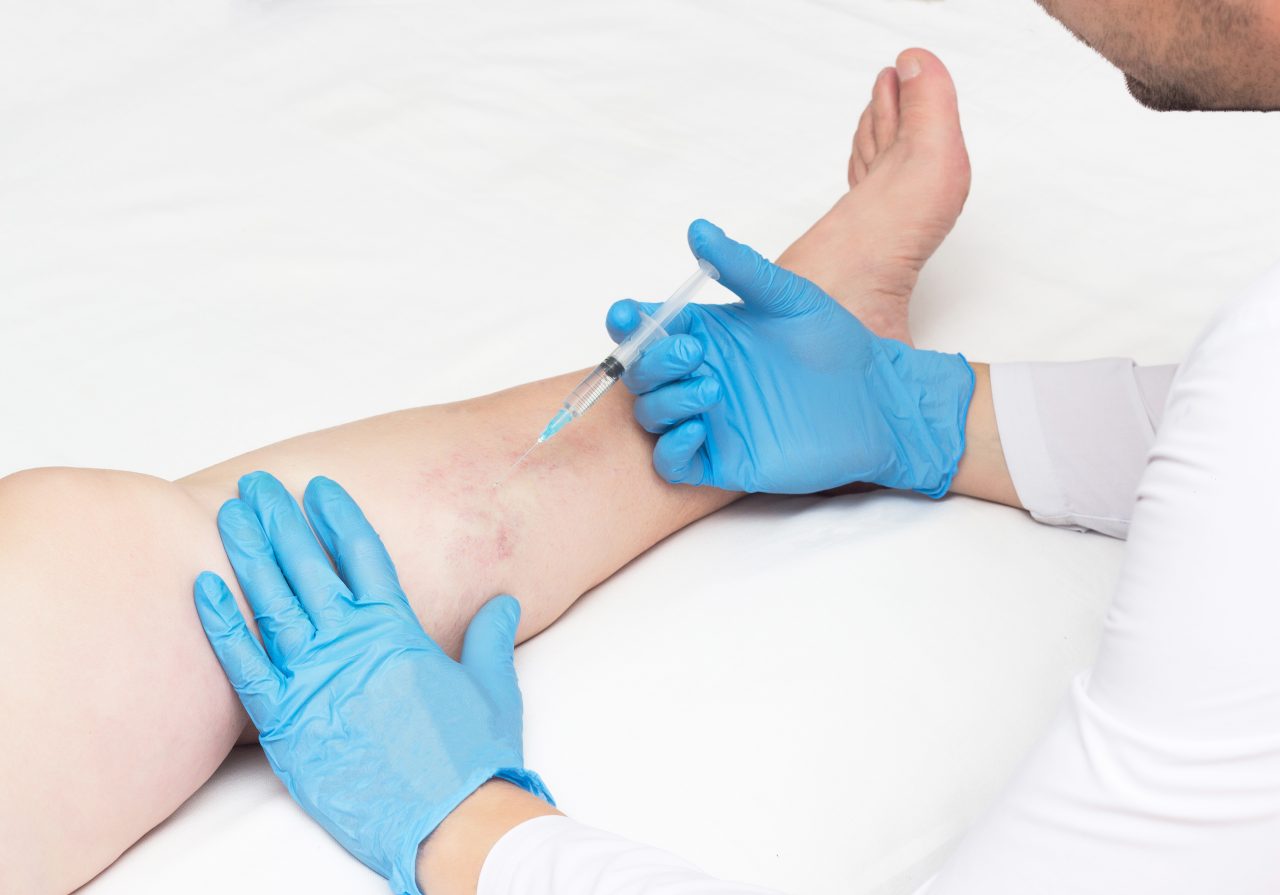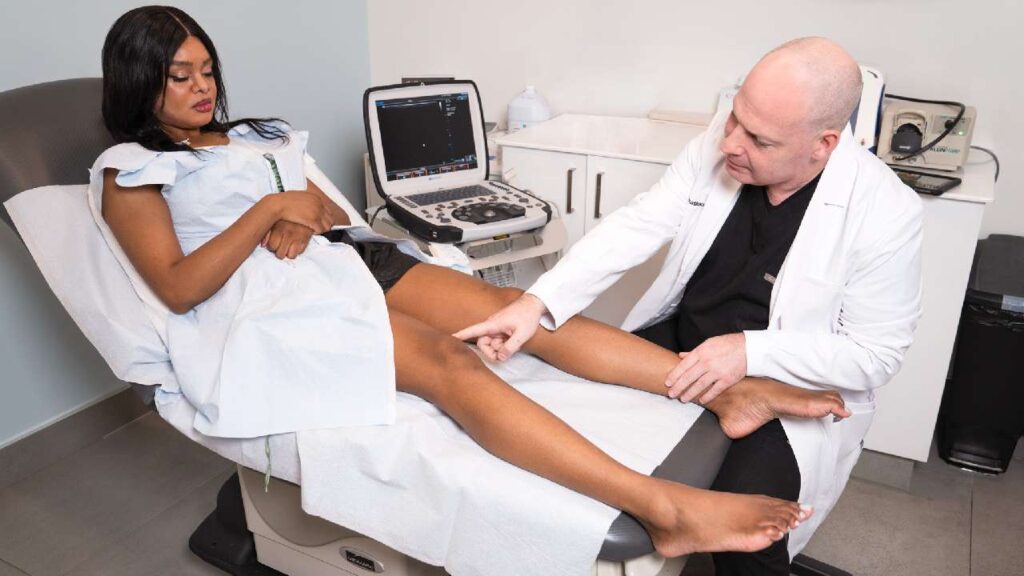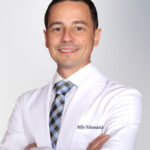Do Laser Vein Treatments Really Work and How?
The premise behind laser vein treatments is using heat to close a vein. There are three primary types of laser vein treatments: intense pulsed light (IPL), surface laser therapy, and endovenous laser ablation. Surface treatments heat the blood through the skin, causing it to coagulate. Endovenous treatments heat the vein’s walls, causing it to close. The key to a successful laser treatment is seeing a vein doctor who knows which one to use.
IPL and surface laser therapy are better for small spider veins near the surface, since they’re applied to the skin. Endovenous lasers treat deeper and larger veins, since they’re administered with a laser fiber that’s inserted through the skin and into the vein. Book an appointment with Harvard-trained vein specialists in New York to determine which laser vein treatment is right for you. Some patients aren’t suited to laser therapy, and our award-winning team offers multiple vein treatment options. Choosing a qualified doctor is essential to preventing laser damage to nerves or skin and preventing a recurrence of spider or varicose veins.

Is Laser Vein Removal Minimally Invasive or Surgical?
All types of laser vein removal are minimally invasive. Pulsed-light and surface treatments are positioned on the skin and don’t involve any surgical incisions. Endovenous lasers are activated with a tiny fiber through a pin-sized incision. So, no matter what type of laser treatment you have, it will not involve surgery, hospitalization, general anesthesia, or a lengthy recovery. In fact, the term “removal” is misleading since the vein is not removed from the body manually. Instead, it is sealed off within the body.
What Are the Different Types of Laser Treatments?
There are three common ways to use lasers for veins. They each have different pros and cons and they aren’t suited to everyone. Ask your vein doctor if you are a candidate for these procedures, or if another procedure would be best.
- Intense Pulsed Light: A vein doctor places a device on the skin and directs light at the damaged vein. The laser energy is absorbed by oxyhemoglobin in the blood and turned into thermal energy. This causes rapid coagulation, which closes off the vein. This procedure is best for small, superficial veins, since the amount of heat needed for larger or deeper veins would damage the skin. Side effects include bruising, blistering, redness, swelling, and discomfort.
- Surface Laser Therapy: The skin is cooled and then doctors send laser energy through the skin to heat the defective vein. This can treat slightly larger veins, but it’s not advised for large varicose veins or deeper vein issues like valve failure and venous insufficiency. Some patients find this procedure less comfortable than non-thermal treatments like sclerotherapy, and it carries the same side effects as IPL.
- Endovenous Laser Ablation: Vein doctors inject tumescent anesthesia to surround the vein and protect the adjacent tissue from heat. Then they insert a laser fiber and position it on the vein’s walls. They activate it to create heat that collapses the vein and scars it shut. Blood is rerouted into healthy veins and the damaged vein is harmlessly reabsorbed by the body. Endovenous laser ablation has a 90% success rate and does not have the same side effects on the skin as surface lasers. But some patients prefer radiofrequency ablation over endovenous laser ablation since it works at a lower heat.
What’s the Best Laser Treatment for Spider Veins?
Spider veins can often be treated with IPL or surface lasers if they’re small and close to the surface. This is particularly true of facial spider veins which frequently stem from sun damage, squeezing the skin, or harsh exfoliants. However, spider veins in the legs often require a different approach. Leg veins pump blood against gravity up to the heart, so they are prone to valve failure. When a valve fails inside the vein, blood accumulates beneath the valve and increases pressure, which generates spider veins and varicose veins.
If your spider veins are caused by valve failure, you need to treat that as well to prevent more spider veins from developing. So, if you have damaged leg veins, choose a doctor with endovenous laser treatment training who can close off the faulty valve, not just the surface damage. When venous insufficiency, blood clots, or vein disease are involved, surface treatments are a temporary solution at best.
Does Varicose Vein Treatment Require an Endovenous Laser?
Varicose vein treatment usually requires an endovenous laser, not an IPL or surface treatment. Varicosities are frequently caused by valve failure in a deeper vein, which can’t be addressed with a surface laser. In addition, varicose veins are larger, more tortuous, and more protuberant. So, the amount of heat needed to close them is too much for most people’s skin. Injecting a protective barrier of tumescent anesthesia and placing the laser directly on the vein is the safer and more effective way to use lasers for large varicose veins.
Are Other Types of Vein Treatments Better Than Lasers?
Lasers are just one of the methods used in minimally invasive vein treatments. For some patients, they are not the best solution. If you have sensitive skin, a skin condition, or dark pigment, sclerotherapy might be advised over surface lasers. And if you need an endovenous treatment, many doctors prefer radiofrequency ablation over laser ablation, since it works at a lower temperature, which is more comfortable to the patient. In addition, vein adhesives, mechanochemical ablation, and foam sclerosants all work well for larger veins. See our award-winning vein doctors to learn which spider or varicose vein treatment is right for you.
Do You Wear Compression Stockings After Laser on Leg Veins?
After laser treatment on your leg veins, you might need to wear compression stockings for a week or two. This is to help keep blood moving seamlessly through your veins and expedite your healing. You do not need downtime, however. You are allowed to resume moderate exercise and return to work as soon as you feel like it, which for many patients, is the same day of treatment.
Who Is the Top Board Certified Laser Vein Specialist in NY?
If you’re wondering, “Does laser vein removal really work,” you should know that the doctor you choose and the laser they use largely determine the answer. Avoid cosmetic vein clinics that only use surface lasers, particularly if the damage is in your leg veins. Visit one of our Centers of Excellence in Midtown or FiDi for world-class vein care in New York. Our vein doctors are experts at selecting and administering the right treatment for you. When done correctly, laser vein removal works, and it won’t need to be repeated.





